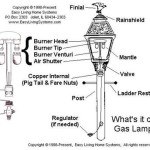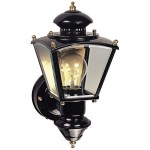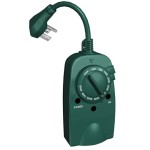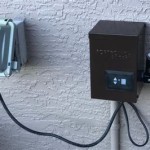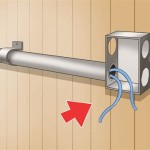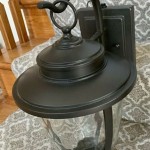Energy Efficient Outdoor Lights: Illuminating Your Spaces Sustainably
As the sun sets, the charm of outdoor spaces doesn't diminish. The right lighting can transform your garden, patio, or driveway into a welcoming and safe haven. However, traditional lighting options can consume significant energy, increasing your carbon footprint and electricity bills. Enter energy-efficient outdoor lights, a sustainable solution that combines functionality with environmental consciousness.
Energy-efficient outdoor lights utilize innovative technologies to reduce energy consumption while delivering sufficient illumination. Here's why you should consider making the switch:
Benefits of Energy Efficient Outdoor Lights:
Energy Savings: Energy-efficient lights consume up to 80% less energy compared to incandescent bulbs, leading to substantial savings on your electricity bills. Over the lifespan of the lights, these savings can be significant.
Reduced Carbon Footprint: By using less energy, energy-efficient lights contribute to a reduction in greenhouse gas emissions. This positive impact on the environment makes them an eco-friendly choice.
Longer Lifespan: Energy-efficient lights, such as LEDs, have a significantly longer lifespan than traditional bulbs. This reduces the need for frequent replacements, saving you money in the long run and minimizing waste.
Improved Light Quality: Energy-efficient lights often provide better quality illumination compared to traditional bulbs. LEDs, for instance, emit a bright, consistent light that enhances visibility and safety.
Versatility: Energy-efficient outdoor lights are available in various styles and designs, allowing you to customize your outdoor space to suit your preferences. From sleek and modern to classic and traditional, there's a light fixture to complement any décor.
Choosing the Right Energy Efficient Outdoor Lights:
When selecting energy-efficient outdoor lights, consider the following factors:
Light Output: Measured in lumens, the light output determines the brightness of the light. Choose lights with sufficient lumens to provide adequate illumination for your intended use.
Color Temperature: Color temperature refers to the warmth or coolness of the light. Warmer tones create a cozy ambiance, while cooler tones provide a more invigorating feel. Select the color temperature that best suits the atmosphere you want to create.
Beam Angle: The beam angle determines how wide or narrow the light is spread. Consider the area you want to illuminate and choose lights with an appropriate beam angle.
Motion Sensors: Motion sensors can help save energy and enhance security. Lights equipped with motion sensors turn on only when movement is detected, reducing unnecessary energy consumption.
Dimming Capabilities: Dimmable lights allow you to adjust the brightness level, creating a more versatile lighting solution. This feature is particularly useful for areas where you need varying levels of illumination.
Conclusion:
Energy-efficient outdoor lights offer a multitude of benefits, from saving energy and reducing carbon emissions to providing better light quality and durability. By incorporating energy-efficient lighting solutions into your outdoor spaces, you can enjoy a well-lit environment while contributing to a greener future.

How To Go Green With Your Outdoor Lighting

How To Create The Perfect Ambience With Outdoor Lighting

How To Increase Commercial Energy Efficiency With Outdoor Lighting Controls Cur Gli Brands

Energy Efficient Outdoor Lighting Ideas Advice Lamps Plus

Use Energy Efficient Outdoor Lighting To Make The Summer Nights Brighter Wire By Xoom

3 Tips To Maintain Outdoor Lighting Energy Efficiency During Winter

Energy Efficient Outdoor Lighting

Energy Efficient Led The Worm That Turned Revitalising Your Outdoor Space

5 Energy Efficient Outdoor Lighting Tips Skyfrog Landscape

Outdoor Lights Garden Exterior Rooms
Related Posts
